![]()
![]()
![]()
Use LEFT and RIGHT arrow keys to navigate between flashcards;
Use UP and DOWN arrow keys to flip the card;
H to show hint;
A reads text to speech;
172 Cards in this Set
- Front
- Back

MINERALS
Quartz |
Luster: Vitreous
Crystals are 6-sided prisims, commonly with terminations and steps perpendicular to long dimension. Crystals may be in clusters, or line cavities in rock; Some weigh several hundred kilograms. Conchoidal fracture;no cleavage |
|
|
MINERALS
NON-METALLIC LUSTER Color: White, Pink, Salmon and will scratch glass What is this rock? |
Orthoclase Feldspar
(Potassium Feldspar) |
|
|
Minerals
Coffin Shaped and two good clevages (90 Degrees |
Orthoclase Feldspar
(Potassium Feldspar) |
|
|
MINERALS
Orthoclase Feldspar |

Coffin Shaped
white pink salmon Will scratch glass |
|
|
MINERALS
Non-metallic luster Hardness 2 1/2 Dark Brown, Black Luster: Vitreous |
Biotite
|
|
|
MINERALS
Dark Mica. Occurs as six-sides "books" and as scattered flakes. Peels into thin, elastic, transparent sheets along one direction of cleavage |
Biotite
|
|
|
MINERALS
Biotite HINT: B FOR... |
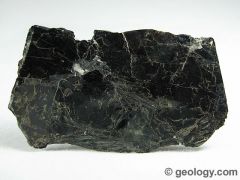
HINT: B FOR BLACK
hardness: 2 1/2 Color: dark brown, black Luster: vitreous Dark Mica. Peels into think, elastic, greenish-brown sheets along one direction of cleavage |
|
|
MINERALS
Metallic-Luster Hardness-1 Color- Silver-Gray |
Graphite
|
|
|
MINERALS
Metallic Luster Streak: Black Marks paper Feels greasy |
Graphite
|
|
|
Minerals
Graphite |
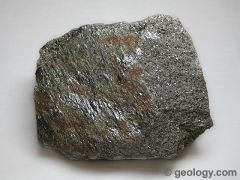
hardness-1
Color: silver gray Streak: Black Marks paper (it is what is used in pencils) Feels greasy |
|
|
Minerals
NON-METALLIC LUSTER Hardness: 2 Color: Colorless, white, occasional pale oragne Luster: Vitreous, pearly |
Gypsum
|
|
|
MINERALS
NON-METALLIC LUSTER Selenite is clear; satin spar is fibrous Cleavage in one directions best developed |
Gypsum
|
|
|
MINERALS
Gypsum |
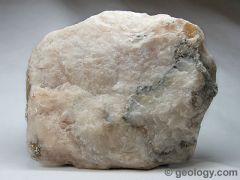
Non Metallic Luster
Hardness: 2 Color: colorless, white, occasional pale orange Luster: Vitreous, pearly Selenite is clear: satin spar is fibrous Cleavage in one directions best developed |
|
|
MINERALS
NON-METALLIC LUSTER Hardness: 5 Color: Dull brownish red to bright red Luster: Submetallic to earthy |
Earthy Hematite
|
|
|
MINERALS
NON-METALLIC LUSTER Red brown streak Commonly earthy and too powdery for accurate hardness test No cleavage |
Earthy Hematite
|
|
|
MINERALS
Earthy Hematite |
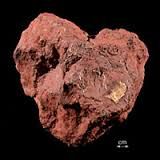
Hardness: 5
Color: Dull Brownish red to bright red Luster: Submetallic to earthy Commonly earthy and too powdery for accurate hardness test No cleavage |
|
|
MINERALS
NON-METALLIC LUSTER Color: Olive Green Hardness: 6 1/2-7 Luster: Vitreous |
OLIVINE
|
|
|
MINERALS
Color distinctive Conchoidal fracture |
OLIVINE
|
|
|
MINERALS
OLIVINE |
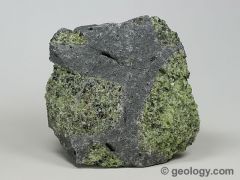
Non Metallic
Color: OLIVE GREEN! Luster: Vitreous Color distinctive Conchoidal fracture |
|
|
MINERALS
NON-METALLIC LUSTER Hardness 3 Color: white: rarely pastels Luster: vitreous |
Calcite
|
|
|
MINERALS
bubbles freely in cold dilute hydrochloric acid Rhombohedral cleavage |
Calcite
|
|
|
MINERALS
Calcite |
Non metallic
hardness: 3 Color: White; rarely pastels |
|
|
MINERALS
Calcite |
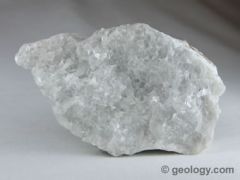
Non metallic
Color: colorless white;rarely pastels Luster: Vitreous BUBBLES WITH ACID |
|
|
MINERALS
METALLIC LUSTER Hardness: 6 Color: Light brass-yellow STREAK: Black |
Pyrite
|
|
|
MINERALS
"Fools Gold" fragile |
PYRITE
|
|
|
MINERALS
Pyrite |
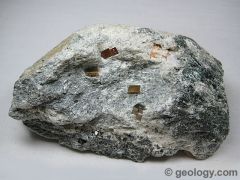
Metallic Luster
Hardness 6 Color: Light brass-yellow Streak: Black "FOOLS GOLD" |
|
|
MINERALS
NON-METALLIC LUSTER Hardness: 2-2 1/2 Color: White, cream Luster: Earthy, dull |
Kaolinite
|
|
|
MINERALS
Soft, powdery texture Generally in clay-like masses with dull appearance |
Kaolinite
|
|
|
MINERALS
Kaolinite |

Non-Metallic Luster
Hardness: 2-2 1/2 Color: White, cream Luster: Earthy, dull soft, powdery texture |
|
|
MINERALS
NON-METALLIC LUSTER Hardness: 6 Color: White, Gray Luster: Vitreous |
Plagioclase feldspar
|
|
|
MINERALS
Will scratch glass Two good cleavages (90 degrees) |
Plagioclase Feldspar
|
|
|
MINERALS
Plagioclase Feldspar |

NON-METALLIC LUSTER
Hardness: 6 Color: White, Gray Luster- Vitreous Will scratch glass Two good cleavages (90 Degrees) |
|
|
MINERALS
NON-METALLIC LUSTER Hardness: 2 1/2 Color: Pale Green Luster: Vitreous to pearly |
Muscovite
|
|
|
MINERALS
Transparent Mica Peels into think, elastic, transparent sheets along one direction of cleavage |
Muscovite
|
|
|
MINERALS
Muscovite |

NON-METALLIC LUSTER
Hardness: 2 1/2 Color: pale green Luster: Vitreous to pearly Transparent mica Peels into thin, elastic, transparent sheets along one direction of cleavage |
|
|
MINERALS
NON-METALLIC LUSTER Hardness 2 1/2 Color: Colorless, salmon, pastels Luster: Vitreous to greasy |
Halite
|
|
|
MINERALS
Cubic cleavage, tastes salty |
Halite
|
|
|
MINERALS
Halite |
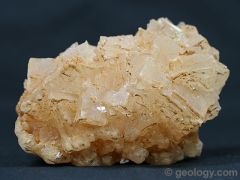
Non-Metallic Luster
hardness: 2 1/2 Color: Colorless, salmon, pastels Luster: vitreous to greasy Cubic cleavage Tastes salty |
|
|
MINERALS
METALLIC LUSTER Hardness: 6 Color: Black Streak: Black |
Magnetite
|
|
|
MINERALS
Magnetic, granular or octahedral crystals common. No Cleavage |
Magnetite
|
|
|
MINERALS
Magnetite |
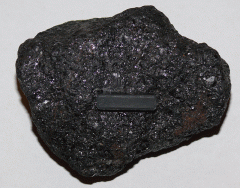
METALLIC LUSTER
Hardness: 6 Color: Black Streak: Black Magnetic, granular or octahedra crystals common. No cleavage |
|
|
MINERALS
METALLIC LUSTER Hardness: 2 1/2 Color: Silver-gray Streak: Black |
Galena
|
|
|
MINERALS
Bright metallic luster, dense. Cubic cleavage |
Galena
|
|
|
MINERALS
Galena |
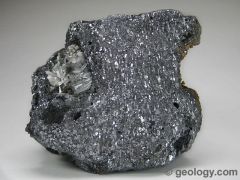
METALLIC LUSTER
Hardness: 2 1/2 Color: Silver gray Streak: Black Bright metallic luster, dense, cubic cleavage |
|
|
MINERALS
NON-METALLIC LUSTER Hardness: 5 1/2-6 Color: Greenish-black to black Luster- Vitreous |
Horneblende
|
|
|
MINERALS
Shiny on cleavage faces Commonly splintery on edges |
Horneblende
|
|
|
MINERALS
Horneblende |
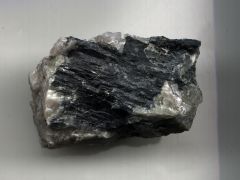
NON-METALLIC LUSTER
Hardness: 5/12-6 Color: Greenish-black to black Luster: Vitreous Barely scratches glass shiny on cleavage faces Commonly splintery at edges |
|
|
MINERALS
NON-METALLIC LUSTER Hardness: 6 Color: Dark green to greenish black Luster: vitreous |
Augite
|
|
|
MINERALS
Generally duller and greener than closely related horneblende Two cleavages (87 and 93 degrees) and uneven fracture |
Augite
|
|
|
MINERALS
Augite |
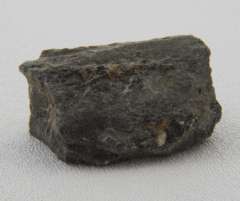
NON-METALLIC LUSTER
Hardness: 6 Color: Dark green to greenish black Luster: Vitreous Generally duller and GREENER than closely related horneblende Two cleavages (87 and 93 degrees) and uneven fracture |
|
|
MINERALS
Which is more green? Augite or Horneblende |
AUGITE!
|
|
|
MINERALS
NON-METALLIC LUSTER Hardness: 1 Color: White to pale green Luster: Pearly |
Talc
|
|
|
MINERALS
EXTREMELY soft; feels soapy, impurities may increase apparent hardness. Commonly in scaly masses. |
Talc
|
|
|
MINERALS
Talc |

NON-METALLIC LUSTER
Hardness: 1 Color: white to pale green Luster: Pearly EXTREMELY SOFT; feels soapy, impurities may increase apparent hardness. Commonly in scaly masses. |
|
|
MINERALS
NON-METALLIC LUSTER Hardness: 7-7 1/2 Color: Brown, red Luster: Vitreous to resinous |
Garnet
|
|
|
MINERALS
Commonly in shades of red-brown, Dodecahedral crystals Transparent to opaque No cleavage |
Garnet
|
|
|
MINERALS
Garnet |
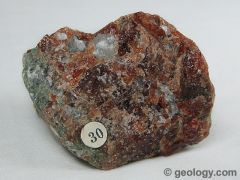
NON-METALLIC LUSTER
Hardness: 7-7 1/2 Color: Brown, red Luster: Vitreous to resinous Commonly in shades of red-brown, dodecahedral cystals Transparent to opaque No cleavage |
|
|
MINERALS
NON-METALLIC LUSTER Hardness: 1 1/2- 2 1/2 Color: Yellow Luster: Resinous |
Native Sulfur
|
|
|
MINERALS
sulfur odor yellow color low hardness, low density |
Native Sulfur
|
|
|
MINERALS
Native Sulfur |
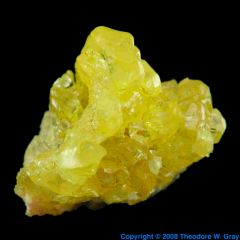
NON-METALLIC LUSTER
Hardness: 1 1/2-2 1/2 Color: Yellow Luster: resinous Sulfur odor Yellow color low hardness, low density |
|
|
MINERALS
Name the NON-METALLIC LUSTER minerals |
...
|
|
|
MINERALS
Name the METALLIC LUSTER MINERALS |
...
|
|
|
SEDIMENTARY ROCKS
TERRIGENOUS CLASTIC SEDIMENTARY ROCKS... List them... |
This is when a rock is weathered, eroded, and the products of erosion are transported as solid particles to the point of deposition.
Akrose Breccia Conglomerate Quartz Sandstone Shale Siltstone |
|
|
SEDIMENTARY ROCKS
Name the 2 mm or larger Terrigenous clastic sedimentary rocks... |
Breccia
Conglomerate |
|
|
SEDIMENTARY ROCKS
Name the sand size: 1/16 to 2 mm Terrigenous Clastic Sedimentary Rocks... |
Akrose
Quartz Sandstone |
|
|
SEDIMENTARY ROCKS
Name the silt-size 1/256 to 1/16mm Siltstone Terigenous Clastic Sedimentary Rocks... |
Siltstone
|
|
|
SEDIMENTARY ROCKS
Name the Clay-Size: Less than 1/256 mm Terrigenous Clastic Sedimentary Rocks.. |
Shale
Siltstone |
|
|
SEDIMENTARY ROCKS
CHEMICAL... list them |
HINT: (3 C's for CHEMICAL)
Chert Coquina Coal HINT: Then warsh it down with: Limestone Rock Salt |
|
|
SEDIMENTARY ROCKS
CLASTIC Size: 2 mm or larger Features: Rounded grains Energy of Environment of Deposition: High-Energy: steam bed subject to violent flooding, steep slope whether above or below sea level. |
Conglomerate
|
|
|
SEDIMENTARY ROCKS
CLASTIC Conglomerate: |
Particle Size:
Distinctive Features: Rounded grains Energy Of Environment of Deposition: High Energy; Steam bed subject to violent flooding, steep slope |
|
|
SEDIMENTARY ROCKS
CLASTIC 2MM or larger (similar to ___ but difference is that fragments are angular |
Breccia
|
|
|
SEDIMENTARY ROCKS
CLASTIC Energy of environment of Deposition: Limited transport of fragments; may be indicative of cavern collapse or landslide |
Breccia
|
|
|
SEDIMENTARY ROCKS
CLASTIC BRECCIA: |
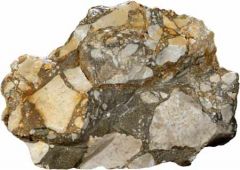
2 mm or larger
Features: Angular Energy of Environment: LANDSLIDE, HASNT GONE FAR (because of angularity) Limited transport of fragments; may be indicative of cavern collapse or landslide |
|
|
SEDIMENTARY ROCKS
CLASTIC Sand size: 1/16 to 2 mm Features: Highly variable: rounded or angular quartz grains, with or without distinct stratification or sedimentary structures, lithified by cement with numerous possible colors. May contain minor feldspar |
Quartz Sandstone
|
|
|
SEDIMENTARY ROCKS
CLASTIC Energy of Environment of Deposition: Beach or nearshore deposit, point bar in river meander, certain alluvial plans. Sand dune or other wind-blown deposit |
Quartz Sandstone
|
|
|
SEDIMENTARY ROCKS
CLASTIC Quartz Sandstone: |

Sand size: 1/16 to 2 mm
Features: highly variable Energy Of Environment of Deposition: Beach or nearshore deposit, point bar in river meander, certain alluvial plans. Sand dune or other wind-blown deposit |
|
|
SEDIMENTARY ROCKS
CLASTIC Sand Size: 1/16 to 2mm Features: Similar to quartz sandstone, except that 25% or more of the particles are feldspar, typically angular and course. May contain mica or other granite constituents |
Arkose
|
|
|
SEDIMENTARY ROCKS
CLASTIC Energy of Environment of Deposition: Near to granitic source rock, typically in alluvial fan or floodplain |
Arkose
|
|
|
SEDIMENTARY ROCKS
CLASTIC Arkose |
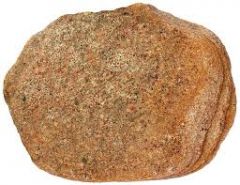
Sand Size: 1/16 to 2mm
Distinctive features: similar to quartz sandstone, except that 25% or more of the particles are feldspar, typically angular and course. May contain mica or other granitic constituents Energy of Environment of Deposition: Near to granitic source rock, typically in alluvial fan or floodplain |
|
|
SEDIMENTARY ROCKS
CLASTIC Silt Size: 1/256 to 1/16 mm Features: Fine-grained rock with slightly gritty feel. Separates along bedding planes with difficulty |
Siltstone
|
|
|
SEDIMENTARY ROCK
CLASTIC Energy Of environment of deposition: Low- to moderate-energy aqueous environment: river, nearshore marine. May be wind-blown material |
Siltstone
|
|
|
SEDIMENTARY ROCKS
CLASTIC Siltstone: |
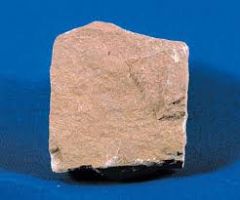
Silt-size: 1/256 to 1/16 mm
Features: Fine-grained rock with slightly GRITTY FEEL. Separates along bedding planes with difficulty Energy Of Environment of Deposition: Low-to moderate-energy aqueous environment; river, nearshore marine. May be wind blown material |
|
|
SEDIMENTARY ROCKS
CLASTIC Clay Size: Less than 1/256 (barely visible) Features: SMOOTH FEEL because particles are very small (clay-size). Splits easily along closely-spaced bedding planes |
Shale
|
|
|
SEDIMENTARY ROCKS
CLASTIC Energy of Environment of Deposition: Low-energy aqueous environment: lake, continental shelf, lagoon, deep marine |
Shale
|
|
|
SEDIMENTARY ROCKS
Shale: |
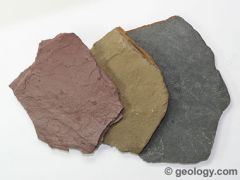
Clastic
Clay Size: Less than 1/256 Features: Smooth feel because particles are very small (clay-size) Splits easily along closely-spaced bedding planes Energy of Environment of Deposition: Low-energy aqueous environment: lake, continental shelf, lagoon, deep marine |
|
|
SEDIMENTARY ROCKS
CHEMICAL Features: Reacts vigorously with cold dulute HCI. Typically light colored. |
Limestone
|
|
|
SEDIMENTARY ROCKS
CHEMICAL Environment of Deposition: Evaporite; organic or inorganic precipitation in marine water (deep ocean floor, reef, lagoon, intertidal zone) or fresh water (cavern, hot spring). |
Limestone
|
|
|
SEDIMENTARY ROCKS
LIMESTONE: |
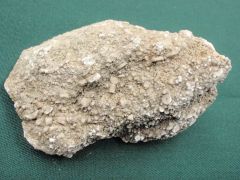
Chemical
Features: Reacts vigorously with cold dilute HCL. Typically light colored. Environment of Deposition: Evaporite; organic or inorganic precipitation in marine water (deep ocean floor, reef, lagoon, intertidal zone) or fresh water (cavern, hot spring). |
|
|
SEDIMENTARY ROCKS
CHEMICAL Features: Shell fragments cemented with calcite. |
Coquina
|
|
|
SEDIMENTARY ROCKS
CHEMICAL Environment of Deposition: Shallow high-energy marine setting with abundant shell-building organisms |
Coquina
|
|
|
SEDIMENTARY ROCKS
Coquina: |
CHEMICAL
Features: Shell fragments cemented with calcite. "shell Breccia." Environment of Deposition: Shallow high-energy marine setting with abundant shell-building organisms |
|
|
SEDIMENTARY ROCKS
CHEMICAL Features: Rock form of halite. Normally a COURSE CRYSTALLINE aggregate. Colorless, or pale orange or rarely other colors |
Rock Salt
|
|
|
SEDIMENTARY ROCKS
CHEMICAL Environment of Deposition: Low-energy site of evaporation of natural waters; coastal marine or desert intermittent lakes |
Rock Salt
|
|
|
SEDIMENTARY ROCKS
Rock Salt: |
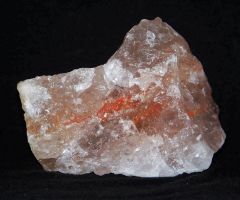
CHEMICAL
FEATURES: Course. Corlorless, pale orange Environment of Deposition: Low-energy site of evaporation of natural waters: coastal marine or desert intermittent lakes |
|
|
SEDIMENTARY ROCKS
CHEMICAL Features: Can be scratched by fingernail |
Rock gypsum
|
|
|
SEDIMENTARY ROCKS
Chemical Environment of Deposition: Same as halite |
Rock Gypsum
|
|
|
SEDIMENTARY ROCKS
Rock Gypsum |
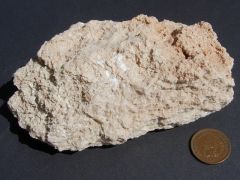
Chemical
Features: Can be scratched by fingernail Environment of Deposition: same as halite |
|
|
SEDIMENTARY ROCKS
CHEMICAL Features: Massive. Conchoidal Fracture. Broken surfaces resemble unglazed porcelain. |
Chert
|
|
|
SEDIMENTARY ROCKS
CHEMICAL Environment of Deposition: Deep ocean ooze of microscopic siliceous shells of single-celled organisms. Inorganic precipitation from sea water. Replacement of pre-existing carbonate. |
Chert
|
|
|
SEDIMENTARY ROCKS
CHERT |
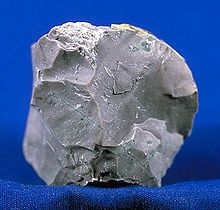
CHEMICAL
Features: MASSIVE. Environment of Deposition: Deep ocean ooze of microscopic siliceous shells of single-celled organisms. Inorganic precipitation from sea water. Replacement of pre-existing carbonate. |
|
|
SEDIMENTARY ROCKS
CHEMICAL Features: dark brown to black, low density. Commonly banded. May contain recognizable plant remains. Tendency to crumble. |
Coal
|
|
|
SEDIMENTARY ROCKS
CHEMICAL Environment of Deposition: Decomposed and altered remains of plants deposited in marshes, swaps, or estuaries |
Coal
|
|
|
SEDIMENTARY ROCKS
Coal: |
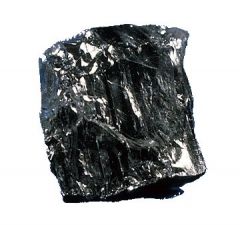
Chemical
Features: Dark borwn to black, low density. Environment of Deposition: Decomposed and altered remains of plants deposited in marshes, swamps, or estuaries. |
|
|
METAMORPHIC ROCKS
Non-foilated (Light Colored + Green list them... |
Marble
Quartzite Serpentinite |
|
|
METAMORPHIC ROCKS
Foliated (microscopic crystals+large crystals List them... |
Slate
Phyllite Schist Amphitbolite Gneiss |
|
|
METAMORPHIC ROCKS
Light Color List them: |
Marble
Quartzite |
|
|
METAMORPHIC ROCKS
GREEN- |
Serpentinite
|
|
|
METAMORPHIC ROCKS
Microscopic crystals: List them |
Slate
Phylite Schist |
|
|
METAMORPHIC ROCKS
Large crystals: List them |
Ampibolite
Gneiss |
|
|
METAMORPHIC ROCKS
Light color Distinctive Features: Reacts with acid (HCI). Color streaks or blotches. Typical Parent rock: Limestone, Dolomite |
Marble
|
|
|
METAMORPHIC ROCKS
Marble: |
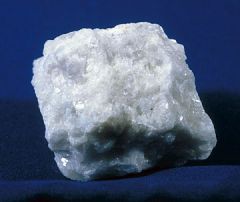
Light color
Features: Reacts with Acid. Color Streaks or blotches. Typical parent rock: limestone, dolomite |
|
|
METAMORPHIC ROCKS
Light color Non-Foliated Features: smoother and harder than sandstone. "Sugary" texture. ? Typical parent rock: Quartz Sandstone |
Quartzite
|
|
|
METAMORPHIC ROCKS
Quartzite: |
Non-Foiliated/Light color
Features: May have a sugary texture; smoother and harder than sandstone Typical parent rock: Quartz sandstone |
|
|
METAMORPHIC ROCKS
Non-foiliated/Green Features: Lime green to dark green or black: dense. Slickensided surfaces Typical parent rock: Mafic or ultramafic rock |
Serpentinite
|
|
|
METAMORPHIC ROCKS
Serpentinite |
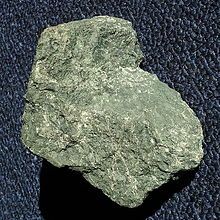
Non-Foliated/Green
Features: Lime green to dark green or black; dense. Slickensided surfaces Typical parent rock: Mafic or ultramafic rock |
|
|
METAMORPHIC ROCKS
Foilated/microscopic Features: Dully to shiny: splits into thin slabs. Harder than shale. Commonly dark gray, brown, red, or green Typical Parent Rock: Shale, siltstone, silicic volcanic rock |
Slate
|
|
|
METAMORPHIC ROCKS
Slate: |
Foliated/microscopic crystals
Features: Dully to shiny; splits into thin slabs. Harder than shale. Commonly dark gray, brown, red, or green Typical parent rock: shale, siltstone, silicic volcanic rock |
|
|
METAMORPHIC ROCKS
Foliated/microscopic crystals Features: nearly invisible mica crystals impart satiny sheen on foliation surfaces. Commonly gray or gray-green Typical Parent rock: Shale, Siltstone |
Phyllite
|
|
|
METAMORPHIC ROCKS
Phyllite: |
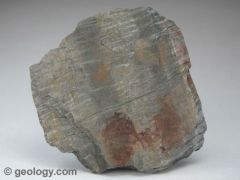
Foliated/microscopic crystals
Features: Nearly invisible mica crystals impart satiny sheen on foliation surfaces. Commonly gray or gray-green Typical parent rock: Shale, siltstone |
|
|
METAMORPHIC ROCKS
Foliated/microscopic crystals Features: visible aligned platy or elongate minerals impart a foliation. Mica abundant; garnet or staurolite crystals common. Typical parent rock: Shale, phyllite, volcanic rock |
Schist
|
|
|
METAMORPHIC ROCKS
Schist: |

Foliated/microscopic crystals
Features: Visible aligned platy or elongate minerals impart a foliation. Typical parent rock: Shale, phyllite, volcanic rock |
|
|
METAMORPHIC ROCKS
Foliated/Large Crystals Features: Dark, dense, mafic rock with aligned hornblende crystals Typical parent rock: Mafic igneous rock, graywacke |
Amphibolite
|
|
|
METAMORPHIC ROCK
Amphibolite: |

Foliated/Large Crystals
Features: Dark, dense, mafic rock with aligned hornblende crystals Parent rock: Mafic igneous rock, graywacke |
|
|
METAMORPHIC ROCKS
Foliated/Large crystals Features: Course-grained rock with alternating light (felsic) and dark (mafic) layers due to segregation of mineral species. Typical parent rock- Any silicate rock |
Gneiss
|
|
|
METAMORPHIC ROCKS
Gneiss: |
Foliated/Large crystals
Course-grained rock with alternating light (felsic) and dark (mafic) layers due to segregation of mineral species. Typical parent rock: Any silicate rock |
|
|
IGNEOUS ROCKS
Ultramafic Features: Dense, course-grained. Consists Olivine and pyrozene |
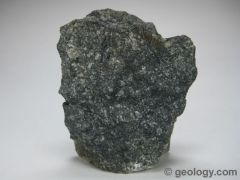
Peridotite
|
|
|
IGNEOUS ROCKS
Features: Dark colored. Abundant round bubble-like cavities. Looks like the ash produced in a coal furnace |
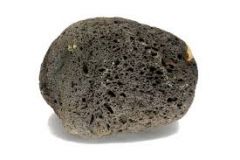
Scoria
|
|
|
IGNEOUS ROCKS
Plutonic Felsic Features: light colored with grains large enough to be visible with the unaided eyes. How it forms: Slow crystallization of magma below Earth's surface |
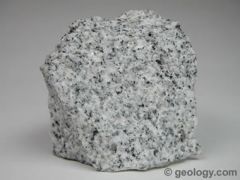
Granite
|
|
|
IGNEOUS ROCKS
Intrusive Crystal size usually larger than 2.5 cm in size.HUGE |
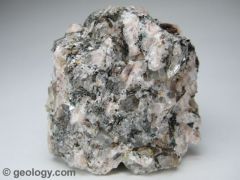
Granite Pegmatite
|
|
|
IGNEOUS ROCKS
Features: Light-colored, extremely porous. Forms during explosive volcanic eruptions. The pore spaces are gas bubbles that were trapped in the rock during the rapid cooling of a gas-rich frothy magma |
Pumice
|
|
|
IGNEOUS ROCKS
Features: small and large crystals. When masses of cooling magma erupt to the surface through volcanic action, crystals are brought to the surface with molten material that will cool quickly and form small crystals around the larger ones. |
Porphyry
|
|
|
IGNEOUS ROCKS
Dark colored, fine grained formed by extrusive rock, such as a lava flaw |
Basalt
|
|
|
IGNEOUS ROCKS
Felsic Glassy |
Rhyolite
|
|
|
IGNEOUS ROCKS
Smooth uniform texture forms when molten rock material cools so rapidly that atoms are unable to arrange themselves into a crystalline structure. |
Obsidian
|
|
|
IGNEOUS ROCKS
Course-grained, dark colored, intrusive black or dark green most abudant rock in deep oceanic crust |
Gabbro
|
|
|
Minerals 2nd 40
Rock Cycle |
?
|
|
|
MINERALS 2nd 40
Definition of Mineral |
Naturally occuring
Definite chemical composition Crystalline Inorganic |
|
|
MINERALS 2nd 40
Mineral properties Hardness |
higher hardness will scratch lower hardness
1. tacl 2. gypsum FINGERNAIL 2.25 3. Calcite PENNY 3.5 4. Flourite 5. Apatite KNIFE, NAIL: 5-5.5 GLASS PLATE: 6 6. Orthoclase 7. Quartz 8. Toapz 9. Corundum 10. Diamond |
|
|
MINERALS 2nd 40
LUSTER |
how a mineral reflects light
|
|
|
MINERALS 2nd 40
METALLIC VS NON METALLIC |
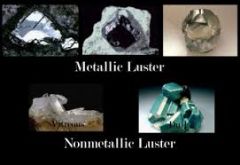
Metallic: Looks like metal
Non Metallic -Vitrous (or glassy) -Pearly (talc, some gypsum) -Silky -Earthy (dull, little reflection) |
|
|
MINERALS 2nd 40
Fracture: 3 types |
Breakage in an uneven manner
Conchoidal Splintery Uneven |
|
|
IGENOUS ROCKS 2nd 40
How do igneous rock form? |
When melted rock solidifies
Molted rock located within the earth is called MAGMA |
|
|
IGNEOUS ROCKS 2nd 40
Magma is a ____ ___ that contains ___ and dissolved _____ |
Silicate melt
Crystals Volatiles |
|
|
IGNEOUS ROCKS 2nd 40
Volatiles: Magmas when cooled form ______ ( ) igneous rocks Lavas when cooled form _______ ( ) igneous rocks |
Substances that are gases at low temperatures
Plutonic (intrusive) Volcanic (extrusive) |
|
|
IGNEOUS ROCKS 2nd 40
VISCOSITY |
The property of a substance to resist flow
|
|
|
IGNEOUS ROCKS 2nd 40
Why do magmas have different viscosities? |
As lava cools, the viscosity increased as the lava starts to solidify
The more complex the silicated melted in the magma, the higher the viscosity * |
|
|
IGNEOUS ROCKS 2nd 40
BOWENS REACTION SERIES: |
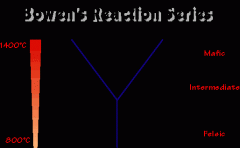
Pg 107
|
|
|
IGNEOUS ROCKS 2nd 40
Classification name the 3 and define |
Felsic: igneous rock rich in light colored minerals such as feldspar
Mafic: igneous rock rich in dark colored ferromagnesian minerals Ultramafic: Igneous rock composed chiefly of dark colored ferromagnesian minerals |
|
|
IGNEOUS ROCKS 2nd 40
Texture: |
Fine grained: one cannot see individual crystals with the naked eye.
Course grained: one can see crystals with naked eye Pegmatitic: exceptionally course-grained crystals Porphyry: An igneous rock in which large crystals and very small crystals exist together PEGMATITE: an igneous rock in which all rystals are pegmatitic |
|
|
IGNEOUS ROCKS 2nd 40
Cooling History |
No crystals: indicate EXTREMELY RAPID COOLNG
Small crystals: Indicate RAPID COOLING Large Crystals: indicate SLOW COOLING Very Large crystals: inidicate SLOW COOLING (and the presence of water) |
|
|
IGNEOUS ROCKS 2nd 40
Terms related to plutonic rocks: |
Still: sheet-like igenous body injected parallel to the local structure
Dike: Sheet like igneous body injected across the local structure Batholith: Enormous body of granitic rock exposed at the surface by erosion Stock: a small batholith |
|
|
IGNEOUS ROCKS 2ND 40
Columnar joint: Vesicles: |
Polygoal columns developed in basalt as it cools and shrinks
Remant gas bubbles in a volcanic rock |
|
|
IGNEOUS ROCKS 2ND 40
LANDFORMS: |
CALDERA: very large collapse depression; usually filled with water
COMPOSITE VOLCANO: contains alternating layers of lava and pyroclastic debris FISSURE FLOW: lava comes from extended fissue instead of a vent SHIELD VOLCANO: large, gently sloping volcano due to basalt flows. CINDER CONE: Small, steeply sloping volcano made up of pyroclastic debris |
|
|
IGNEOUS ROCKS 2ND 40
PYROCLASTIC ROCKS: |
explosively formed volcanic rocks
TUFF: explosively formed, fine-grained volcanic rock welded together |
|
|
IGNEOUS ROCKS 2ND 40
ROCK TYPES: |
GRANITE: FELSIC, INTRUSIVE
RHYOLITE: FELSIC, EXTRUSIVE ANDESITE: INTERMEDIATE, EXTRUSIVE GABBRO: MAFIC, INTRUSIVE BASALT: MAFIC, EXTRUSIVINE SCORIA; MAFIC, EXTRUSIVE PLUS VESICLES PERIDOTITE: ULTRAMAFIC, INTRUSIVE PUMICE: FELSIC, EXTRUSOVE PLUS VESICLES OBSIDIAN: FELSIC, EXTRUSIVE, GLASSY |
|
|
SEDIMENTARY 2ND 40
Sedimentary rock: |
Starts from Within (usully at cool conditions) and when they get to surface WATER, WIND, GLACIER ICE, OR BIOCHEMICAL PROCESSES
|
|
|
SEDIMENTARY ROCKS 2ND 40
TYPES OF SEDIMENTARY ROCKS: |
CLASTIC: Made up of clasts and cement
CHEMICAL: Made of chemical or evaporite sediments: most such rock made up of just one mineral species |
|
|
SEDIMENTARY ROCKS
Weathering: Mechanical vs Chemical |
Mechanical: bit to little particles
Chemical: dissolution of minerals, or formation of new minerals that are more stable at the lower temperature, lower pressure, and higher moisture at the earths surface. |
|
|
SEDIMENTARY ROCKS 2ND 40
Transportation and Deposition: for clastic Rocks: |
Clasts are physically transported by WIND, WTER CURRENTS, FLOWING GLACIER ICE, and/or gravity
Clasts are deposited when the transportation energy is insufficient to move the particle. As transportation energy decreased, the larger (heavier) particles are deposited first. High Energy: environments can carry large and small particles Low Energy: environments can carry only small particles see pg 147 |
|
|
SEDIMENTARY ROCKS 2nd 40
Transportation and Deposition: For chemical sedimentary rocks: |
Sediments come from precipitation out of solution by biological activity, chemical change, or evaporation.
|
|
|
SEDIMENTARY ROCKS 2nd 40
Texture: Particle Size: |
the diameter of the clast:
clay: very fine-grained 1/256 mm Silt: fine grained, 1/256 to 1/16 mm Sand: Medium-grained, 1/16 to 2 mm Gravel: Course-grained, smaller than 2 MM |
|
|
SEDIMENTARY ROCKS 2nd 40
What doe particle size indicate? |
The energy of the transporting medium. The larger the size of grains in a clastic rock, the more energy it takes to move that particle to the place of deposition.
|
|
|
SEDIMENTARY ROCKS 2ND 40
TEXTURE: ANGULARITY: |
The degree to which the individual sedimentary particles are rounded
Well rounded: all corners of a grain are rounded off Angular: all corners of a grain are still sharp (pointed) |
|
|
SEDIMENTARY ROCKS 2ND 40
What does angularity indicate? |
The more of the corners of an individual grain in a clastic rock are rounded, the longer the distance the grain has been transported. (pg 145)
|
|
|
SEDIMENTARY ROCKS 2ND 40
Texture: SORTING: |
The degree to which the sedimentary particles are the SAME SIZE.
Poorly Sorted: large and small grains jumbled together Well-sorted: all grains are the same size. Poor sorting suggests that the particles have no been transported very far. |
|
|
SEDIMENTARY ROCKS 2ND 40
SEDIMENTARY STRUCTURES: |
1. stratification: horizontal layering at time of deposition
2. Ripple marks: undulatory structures due to wind/water current 3. Cross bedding: inclined layering within a horizontal bed due to ripple mark remins 4. Fossils: evidence of past life 5. Mud cracks: when mud dries, it shrinks and pulls apart from itself, forming polygonal columns. |
|
|
METAMORPHIC LAB:
METAMORPHISM: |
Process by which an increase in temperatures and/or pressure produces a significant, detectable change in the texture and/ or mineralogy of the original rock in the absence of melting.
|
|
|
METAMORPHIC ROCKS 2ND 40
factors/conditions of metamorphism: |
High temperature
High pressure Presence of fluids (H20 |
|
|
METAMORPHIC ROCKS 2ND 40
Grade/Degree of Metamorphism: |
Low: Small changes in texture and or mineralogy of parent rock
Medium High: extreme- radical changes in texture and or mineralogy of parent rock |
|
|
METAMORPHIC ROCKS
Types/styles of metamorphism: |
Regional metamorphism: affects a large area.
components include HIGH TEMPERATURE/PRESSURE and SHEER STRESS CONTACT METAMORPHISM: achieved chiefly by application of HEAT to rock surrounding a cooling body of magma. Components include HIGH TEMPERATURE and relatively LOW PRESSURE DYNAMIC METAMORPHISM: -Achieved chiefly by application of SHEAR STRESS -Components include LOW TEMPERATURE and HIGH PRESSURE |
|
|
METAMORPHIC ROCKS
Texture: Foliation, types of foliation: |
Foliation: Parallel alignment of platy or elongate mineral grains in a rock caused by directed stress.
Types of Foliation: Slaty Cleavage: Parallel alignment of microscopic mica flakes in a fine grained metamorphic rock; therefor rock can cleave along flat planes Schistosity: Like salty cleavage, but mica grains are relatively large parallel to one another Gneissic Layering: Discontinous light and dark layering due to mineral segregation |
|
|
METAMORPHIC ROCKS
How do previously existing minerals become new minerals through metamorphism? |
A: By reshuffling the elements of the minerals in the parent rocks to make new minerals.
|

